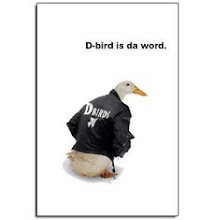This entry is half-baked, because I'm still thinking about how the ideas could/would/might apply to the environment of a school library.
Skidding through Time magazine (April 14, 2008 issue), there is a book review of Nudge: Improving decisions about health, wealth and happiness, by Thaler and Sunstein.
Here's a quote from the review (my choice to bold one section):
For 30 years, Thaler has documented the ways people act illogically: we eat more from larger plates, care twice as much about losing money as about gaining it, fret over rare events like plane crashes instead of common ones like car accidents. That research underpins Nudge's argument that as policymakers go about their jobs--whether regulating the mortgage industry or organizing food in school cafeterias--they should design programs that give people choices but also invisibly coax them away from bad ones. Putting healthful food at the front of a cafeteria line, for example, leads kids to take more of it, even with nothing to stop them from picking the chips and cookies farther down.
I wonder, without yet having any answers, how this might apply in a school library, and our learning environment. How might we rethink the way in which choices are presented? How might changing things alter learning outcomes, student experiences? How might we be coaxing students away from bad choices, and towards good ones?
Still thinking. It could relate to how books are displayed/accessed/promoted, how we design the spaces of our libraries, all sorts of things. Go read the review and see what it suggests to you.
Subscribe to:
Post Comments (Atom)






















1 comment:
I'm a SLMC grad student, and in the middle of "Nudge". It seems so full of possibilities for fresh think with structured choices in the library, but a web search turned up nothing. Don Norman's book "the Design of Everyday Things" might be a good companion for thinking about creatively this topic, and extending it to the LMC. Architecture, and design applied to thinking and choice.
Post a Comment